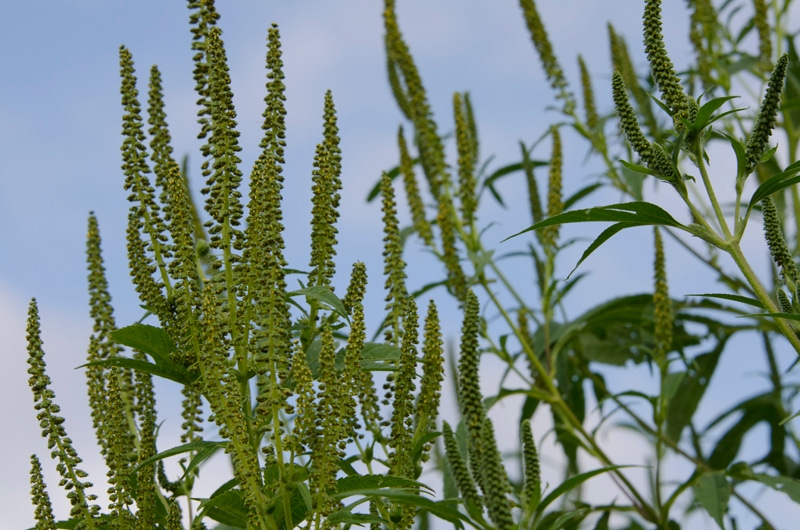April 28, 2022

While several factors have come together to result in the shortage, most are the result of the supply chain getting interrupted with shipping and truck transport of active and inert ingredients, shortages of packaging material, and in the case of glyphosate, Hurricane Ida damage to the largest manufacturing facility. As with many shortages, this may result in a price increase in herbicides containing active ingredients in short supply.
How can the impact of a shortage be reduced?
Examine your weed management plan to see if it can be adjusted as far as cropping system or tillage management. Investigate weed control guides from your University Extension or chemical retailer for options that may be available. In no-till cropping systems, glyphosate is the backbone for burn-down use in the place of tillage. In addition, with the increasing use of cover crops, they are often terminated with glyphosate, particularly in no-till systems. Tillage may be considered as a control method for fall annual and early spring weeds and cover crops. This may not be a solution for operations that are not set up to use tillage and the possible negative impact on conservation. Using a residual herbicide to follow the tillage operation with a weed management plan should strongly be considered.
Scenarios
Winter annual control in the fall in a no-till system
Plant a cover crop. A cover crop with high biomass prior to freezing that includes cereal rye for the allopathic effect. If broadleaves are not included in the cover crop, an application of 2,4-D or dicamba can be applied to help control annual broadleaf weeds that emerge prior to freeze.
Fall control of weeds in no-till system without a cover crop
Consider replacing glyphosate with 2,4-D and dicamba mixture, if broadleaf weeds are the only concern.
If grass weeds are also a concern and the grass weeds are small and growing and glyphosate is not used, there are other products that can help suppress grass weeds. Other products such as paraquat, clethodim, and rimsulfuron. Proper identification is important as these products may not control the same spectrum of weeds as glyphosate. Review the product label to ensure the target weed is listed.
If the field will be planted to soybean, a possible tank mix could include: Paraquat is commonly used with metribuzin and 2,4-D or dicamba for fields going to soybean.
If the field will be planted to corn, paraquat + simazine + 2,4-D or dicamba would be an effective broad-spectrum treatment. If you are using a clethodim or rimsulfuron product instead of paraquat, add 2,4-D or dicamba to help with broadleaf weeds.
If using a lower rate of glyphosate, consider adding a saflufenacil product that may help increase the rate of activity of the glyphosate.
Spring no-till systems
For no-till corn acres, the weed management plan should address how to control winter annuals and early summer annual weeds that have emerged prior to planting and determine which residual product to include in a tank mix or premix.
Burndown herbicides that have some foliar activity on early spring weeds include products with atrazine, isoxaflutole, mesotrione, rimsulfuron or thiencarbazone, metribuzin, or saflufenacil.
Products such as Isoxaflutole, rimsulfuron, and thiencarbazone have both foliar and residual activity on grasses and a select number of broadleaf weeds
Metribuzin, saflufenacil, and mesotrione have foliar and residual activity on marestail, and some control on problem pigweeds such as waterhemp and Palmer amaranth.
Consider adding a group 15 herbicide (metolachlor, dimethenamid, pyroxasulfone, acetochlor) for residual grass and small seeded broadleaf weed control program.
Considerations if glyphosate supply is limited on the farm
Consider using the base rate of 22 oz/acre application rate of Roundup PowerMAX® Herbicide to stretch the supply. Roundup PowerMAX® 3 Herbicide is also available, and the base rate is 20 oz/acre which is equivalent to 22 oz/acre of Roundup PowerMAX Herbicide.
Identify glyphosate premixes that may be in greater supply or at lower relative costs compared to solo glyphosate products.
Follow the label of the chosen product and make sure the equipment is calibrated with the correct nozzles, and weeds are the correct size for best results.
For corn, if a residual product does not contain a group 15 herbicide in the post emergence application, replace it with one that does.
Use tillage when possible, perhaps in-season cultivation.
To find a replacement herbicide, consult the herbicide labels and weed management guides available from either Universities or government agricultural agencies as they provide ratings as to the effectiveness of products against certain weeds.
Source: DeKalb AsGrow, which is solely responsible for the information provided and is wholly owned by the source. Informa Business Media and all its subsidiaries are not responsible for any of the content contained in this information asset.
Read more about:
Crop ConditionsYou May Also Like




